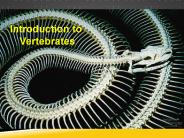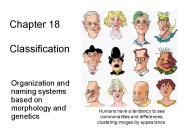Theropods PowerPoint PPT Presentations
All Time
Recommended
Birds and Theropods The Theropods had these traits that are similar in some ways to birds Elongate, mobile and S-shaped neck A foot with 3 toes pointed forward and ...
| PowerPoint PPT presentation | free to view
Hind Foot. 3 Functional. Digits. Bowed Femur. Broadly Exposed. Lachrymal Bone. Typical Features of Theropods. 20 cm. Claws. Front foot. Femur. Hind foot. 2 cm ...
| PowerPoint PPT presentation | free to view
Suchomimus had an elongate skull, probably indicative of being a fish eater (piscivore) ... Tyrannosaur skulls are extremely robust compared to other theropods. ...
| PowerPoint PPT presentation | free to download
Archaeopteryx has very similar skeletal structure to some smaller theropods. Three fingered forelimb. Reversed toe. Bipedalism. Ancestry: Thecodont ...
| PowerPoint PPT presentation | free to view
Characterized by 3 part hip structure similar to that of lizards. Who were the Theropods ... Where are Archaeopteryx found? Mostly in Germany. Cretaceous Coelurosaurs ...
| PowerPoint PPT presentation | free to view
Evolved from two-legged dinosaurs called theropods. Often called feathered dinosaurs ... Osprey Nest. Flamingo Nest. Owl's Nest. Adaptations ...
| PowerPoint PPT presentation | free to view
Introduction to Birds. Acorn Woodpecker. Bald Eagle. Peregrine Falcon. American White Pelican ... http://www.ucmp.berkeley.edu/diapsids/saurischia/theropoda.html ...
| PowerPoint PPT presentation | free to view
A survey of dinosaur diversity by clade, age, country and year of description. Michael P. Taylor dino@miketaylor.org.uk Introduction Understanding dinosaur diversity ...
| PowerPoint PPT presentation | free to download
Camarasaurus, Cetiosaurus, Chasmosaurus, Edmontonia (4 species) ... publicised and recruited to star in Jurassic Park XIV: Wrath of the Raptors. ...
| PowerPoint PPT presentation | free to download
... Maiasaura Parasaurolophus Pachycephalosaurus Diplodocus Brachiosaurus Deinonychus Compsognathus Coelophysis Allosaurus ...
| PowerPoint PPT presentation | free to view
Archaeopteryx. Described in 1861. Origin of Species: 1859. 145 ... Archaeopteryx. Asymmetrical feathers. Curved claws on feet. Lacked supracoracoideus muscles ...
| PowerPoint PPT presentation | free to view
III. Mesozoic Era A. Triassic Period (250 - 205 mya)
| PowerPoint PPT presentation | free to download
characterized chiefly by a vertebral column. Earliest known was the conodont ... sharing a more recent common ancestor with Allosaurus than with modern birds) ...
| PowerPoint PPT presentation | free to download
Crocs ( and dinos?) muscles pulling liver backward and 'rocking' pelvic bones ... How could phylogeny explain the difference between turtles and crocs? ...
| PowerPoint PPT presentation | free to download
Title: Slide 1 Author: Computing & Information Services Last modified by: Furman User Created Date: 5/15/2006 7:16:30 PM Document presentation format
| PowerPoint PPT presentation | free to download
pterosaurs. dinosaurs. upright posture. bipedal locomotion. large body size. diaspid phylogeny ... pterosaurs. dinosaurs. ornithischians. saurischians ...
| PowerPoint PPT presentation | free to download
IB Biology HL Why Classify? Identify connections between _____ and _____ organisms Identifying unknown organisms Understanding evolutionary relationships and the ...
| PowerPoint PPT presentation | free to view
The Brachiosaurus lived in the late Jurassic time period to the early Cretaceous. ... surviving until 140million years ago , during the dawn of the Cretaceous period. ...
| PowerPoint PPT presentation | free to view
Life of the Mesozoic Era main points .. 1.marine invertebrates that survived end Permian extinction diversified and repopulated the seas 2. flowering plants evolve ...
| PowerPoint PPT presentation | free to view
Title: Slide 1 Author: Computing & Information Services Last modified by: reviewer Created Date: 5/15/2006 7:16:30 PM Document presentation format
| PowerPoint PPT presentation | free to download
Title: Chapter 24 Subject: Earth Science Author: Glencoe/McGraw-Hill Last modified by: Howells Public School Created Date: 3/26/2004 3:29:16 PM Document presentation ...
| PowerPoint PPT presentation | free to view
Bird Evolution and Classification Dr. Girish Jathar Scientist-in-charge ENVIS Centre BNHS
| PowerPoint PPT presentation | free to download
Probably hunted in packs (lots of fossils found near big prey fossils) Lots of claws and teeth, including huge talon on one digit of forelimbs ...
| PowerPoint PPT presentation | free to view
Like reptiles, birds have clawed toes and protein scales on their feet. Fertilization is internal and shelled amniotic eggs are produced. Some birds are flightless, ...
| PowerPoint PPT presentation | free to view
LECTURE 7: Mesozoic Era 248 mya 65 mya Periods of the Mesozoic Era Triassic 248 mya-206 mya Jurassic 206 mya-146 mya Cretaceous 146 mya-65 mya What Significant ...
| PowerPoint PPT presentation | free to download
Figure 3.1 Paleozoic amphibians, Crassigyrinus (group, incertae sedis) and Diplocaulus (Nectridea). Adapted from Milner et al., 1986, and Milner, 1980.
| PowerPoint PPT presentation | free to download
Introduction to Vertebrates
| PowerPoint PPT presentation | free to download
Water moves heat around the planet; tectonics determines how ... Seafloor spreading causes bulges in ocean basins. Big enough bulges and/or lots of them ...
| PowerPoint PPT presentation | free to download
Title: BDOL Interactive Chalkboard Subject: Chapter 17 Author: Cherie Hatton Last modified by: mcopeland Created Date: 8/28/2002 5:01:07 PM Document presentation format
| PowerPoint PPT presentation | free to view
Described by Fick's Law of Diffusion (see previous class) Very slow over any distance ... Majungatholus. atopus. Anatomy of the Mammalian Lung ...
| PowerPoint PPT presentation | free to view
Chapter 15 Life of the Mesozoic Era ...
| PowerPoint PPT presentation | free to download
Most bird communities or faunas are mosaics of species of various ages from various historical backgrounds ... (leaping or gliding) Vigilence Migration, etc ...
| PowerPoint PPT presentation | free to download
... into the Archosauromorpha (Crocs, birds, pterosaurs, and ... differently than crocs. move nares to top of skull. Saurischia. Palaeopoda (4-legged gait) ...
| PowerPoint PPT presentation | free to view
Lots of claws and teeth, including huge talon on one digit of forelimbs ... Dinosaurs were huge - could have been effectively homeothermic w/o endothermy ...
| PowerPoint PPT presentation | free to view
origin of the parasitic feeding guilds in terrestrial ecosystems ... and shared the seas with ichthyosaurs, plesiosaurs, and other marine reptiles. plesiosaur ...
| PowerPoint PPT presentation | free to view
Archaeopteryx One of first bird fossils described (1861) Still the earliest known bird Lived 145 MYA Missing link between birds and reptiles, prominent in early ...
| PowerPoint PPT presentation | free to view
if dinosaurs were dumb and slow, why were they the dominant life form for 150my? ( No non-dinosaur larger than a turkey walked the land during the age of dinosaurs) ...
| PowerPoint PPT presentation | free to view
0 Chapter 18 The Evolution of Animal Diversity Mammals are amniotes that have hair and produce milk Mammals are endothermic amniotes with Hair, which insulates their ...
| PowerPoint PPT presentation | free to download
This 147-million-year-old Archaeopteryx fossil, owned by London's Natural History Museum, ... the world, Archaeopteryx is usually kept in environmentally ...
| PowerPoint PPT presentation | free to view
Chapter 34 The Origin and Evolution of Vertebrates
| PowerPoint PPT presentation | free to view
Triassic - North America and Gondwanaland rift apart; ... Africa and Antarctica/Australia rift apart. End of Jurassic - Eurasia rotates, closing off Tethys, ...
| PowerPoint PPT presentation | free to view
Allosaurus fragilis. Fig. 4 Reconstruction of Cryolophosaurus ellioti ... This orientation is similar in Allosaurus, except for the angle from the neural ...
| PowerPoint PPT presentation | free to view
The Mesozoic is the time in which the dinosaurs lived. ... Other things may also have been responsible for the presence of the iridium, and ...
| PowerPoint PPT presentation | free to view
Birds Chapter 27 * * * * * * * * * * * * * * * * * * * * * * * * * * * * * * * * * * * * * Excretory System Urine is formed in large, paired metanephric kidneys.
| PowerPoint PPT presentation | free to view
Barney to Big Bird: The Origin of Birds The fuzzy raptor Caudipteryx The discovery of feathered dinosaurs in Liaoning, China, has excited the many ...
| PowerPoint PPT presentation | free to download
Crocodile. Mammal. Imperfect 4 -Chambered. 2 Chambered. 4 ... crocodile chow. Warm-Blooded Dinosaurs? = Plant eaters = Meat eaters. Predator:Prey Ratios ...
| PowerPoint PPT presentation | free to view
Chapter 18 Classification Organization and naming systems based on morphology and genetics Humans have a tendency to see commonalities and differences, clustering ...
| PowerPoint PPT presentation | free to download
... C-14 Radiocarbon Types of carbon (isotopes ... Dating Used to date igneous and metamorphic rocks ... in the nucleus 8 8 Stable Oxygen 7 7 Stable ...
| PowerPoint PPT presentation | free to download
Amniotes are a group of tetrapods ... Archaeopteryx. Remains the oldest bird known. Figure 34.29. Toothed beak. Airfoil wing with ...
| PowerPoint PPT presentation | free to view
Large Sauropod 3.0 1.0 2.2 walk. Small Sauropod 1.5 1.1 2.5 walk. Ornithopod .14 4.3 9.6 run ... Sauropods. Apatosaurus louisae 33.5 - 37.5. Brachiosaurus ...
| PowerPoint PPT presentation | free to view
Nadia Ghazi A. Albertosaurus B. Brachiosaurus C. Baryonx D. Ornithomimus Here s a hint: This dinosaur is an omnivore. Ornithomimus means bird mimic.
| PowerPoint PPT presentation | free to view
The two major schools of classification are evolutionary systematics and cladistics. ... Cladistics is concerned with ancestral and derived characters. ...
| PowerPoint PPT presentation | free to view
Mesozoic Earth and Life History
| PowerPoint PPT presentation | free to view
























































